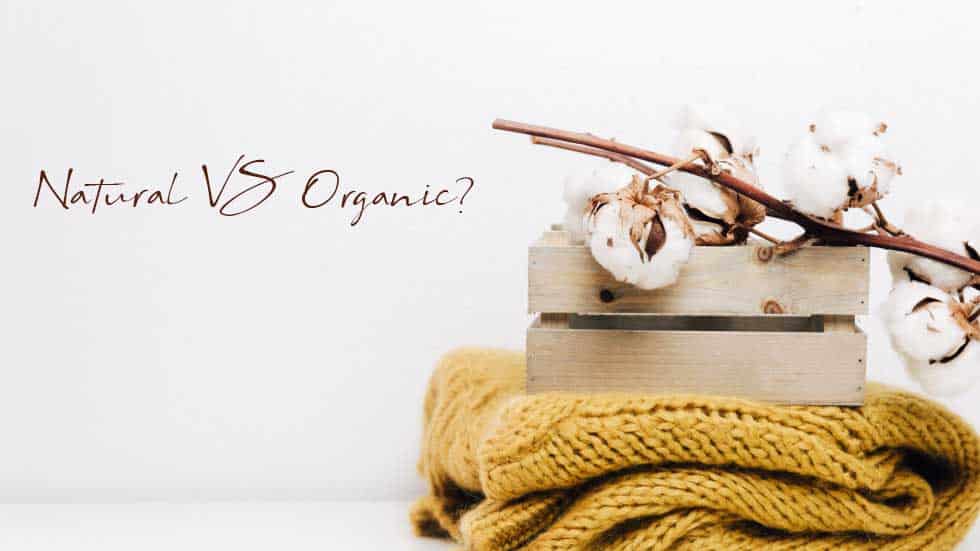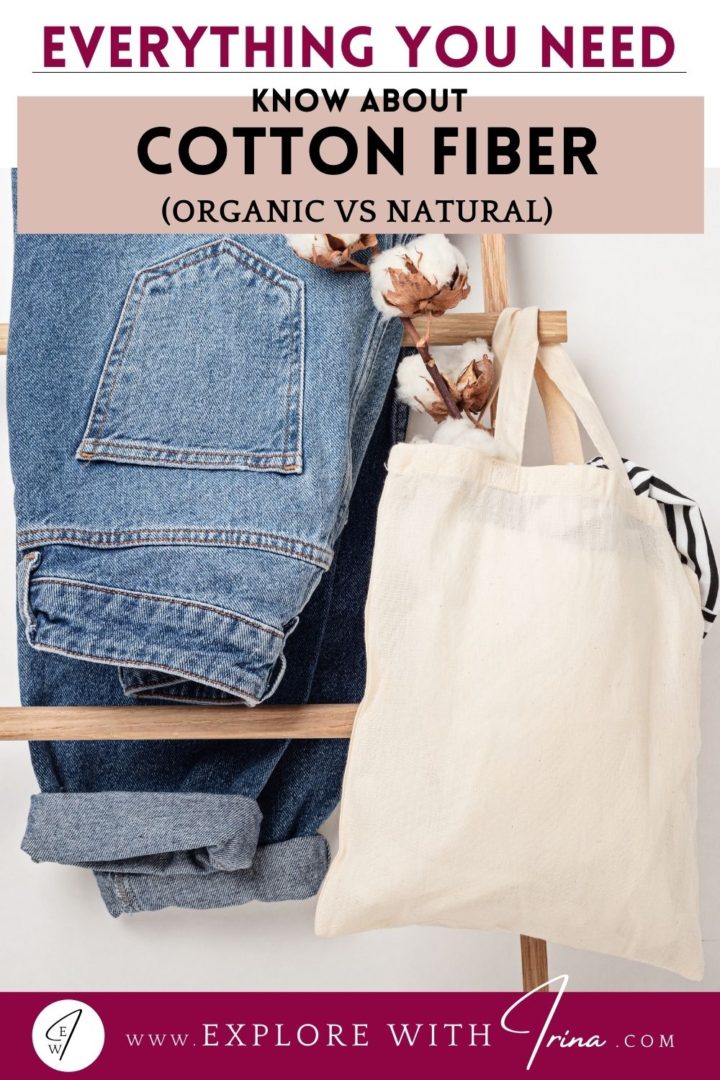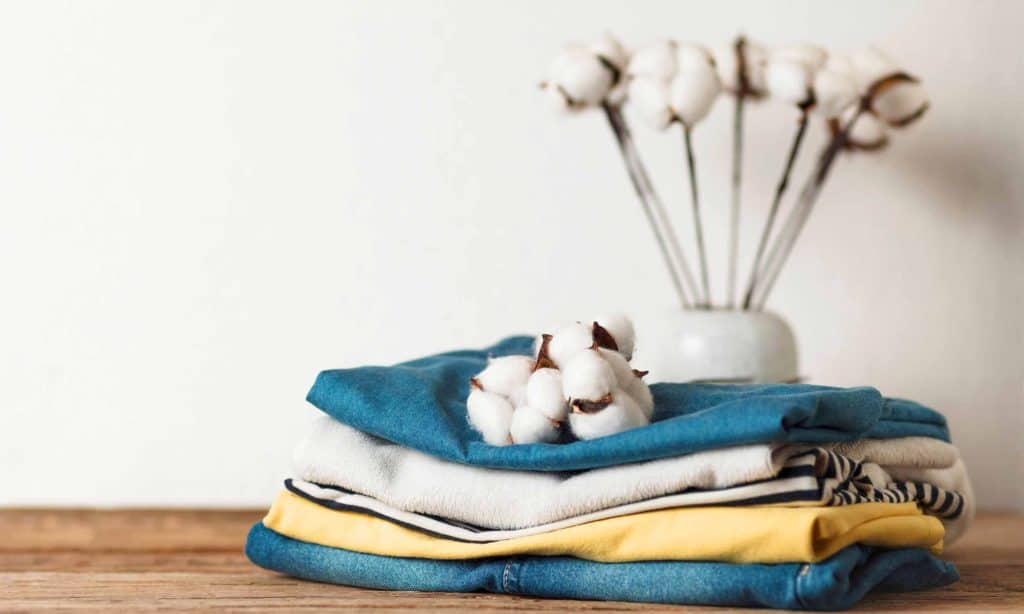We already went through the basics of materials in general, in my last blog. Now let’s talk in detail about one of the most popular fibers, cotton. The history, origin and the difference between Natural and Organic Cotton?
Cotton is the real “simplicity of genius”. Known for centuries, it still never stops surprising us. And the most fantastic thing about this material is that it is being hailed and condemned almost equally by manufacturers, fashion designers, regular consumers, and environmental activists. So what is so special about this seemingly plain and simple fabric that turns it into a newsmaker and gravitational point of so many industries, cultures, and trends?
Some say that it is the ultimate sustainable material and the foundation of conscious consumption. Others claim that the road to Hell is paved with 100% cotton t-shirts. The truth, as usual, lies somewhere in the middle! In this article, we shall go over the history of Cotton, its origin and try to understand whether the label “100% cotton” is a symbol of conscious and sustainable fashion or just another deceiving marketing tool.
The legend of the flying sheep
Cotton is truly one of the most ancient materials known to mankind. The first records about it date back to 6000 BC India. It was widespread and commonly cultivated all over Asia, the Middle East, and Africa for thousands of years but came to Europe only around the 1st century. Those were Arab traders who introduced Europeans to this amazing material when they came to Italy and Spain looking for new trade connections and sales markets.
They brought the fabric, but not the crop itself, so Europeans had no idea how it is manufactured and where the fiber comes from at all. According to some documents, it was a common belief that Cotton is a kind of wool that comes from quite specific sheep that live only in Asia. Specific indeed: according to some descriptions, those sheep had wings and lived on trees. According to some “research,” those sheep even grew on trees in India. As you see, those merchants worked hard to keep the origin of cotton fabric secret and monopolize the trade!
But no secret may stay buried forever, and soon enough Europeans have learned the truth – the cotton crop was discovered and successfully farmed in Spain and Italy. The origin of Cotton might have become less mysterious and exotic. But the fabric itself took over the European manufactures. It is essential to understand that those were different variations of cotton textile – muslin and calico. When in 1492, Columbus’s unfortunate trip to India ended up discovering the New World, Europeans finally got acquainted with the cotton fabric as we know and love it today! Apparently, it has been successfully farmed and manufactured in Mexico since around 5000 BC. That was also when Europeans first got a chance to try on the first jeans – denim trousers became very popular among sailors in the 1500s for their durability and comfort.
The real Golden Age of Cotton began in the 1700s when the British Empire’s growth and Great geographic discoveries brought new species of cotton plants and types of textiles to Europe. The Industrial Revolution has led to various cotton fabrics’ mass-manufacture, making Britain the textile industry leader.
Of course, nobody would believe in the myth about flying or vegetable sheep today, but hardly anyone still knows where the most common cotton fabric comes from. Moreover, it might seem quite confusing why seemingly the same white cotton t-shirt may have such a wide price range due to its origin. Let’s try to understand the difference between various cotton fabrics and what it takes to make one plain cotton t-shirt.
Cotton – a raw fabric with a complicated background

Cotton is the most popular fabric globally: more than half of all fibers manufactured all over the globe are Cotton. Many factors easily explain this high demand – Cotton is exceptionally durable and versatile. It also has various applications in almost every sphere of our modern life – from high fashion to healthcare. Another reason for the global Cotton upraise is the recent increased focus on sustainable materials, natural fabrics, and eco-friendly manufacturing. And this is the point when Cotton appears as an unexpectedly double-faced character.
We all know that the road to Hell is often paved with good intentions. Whatever was meant to be a foundation of conscious consumption, fair trade, and sustainable manufacture has soon enough become a hunting ground for unscrupulous merchants. The easy mix and match between the terms like “natural”, “organic”, “original,” etc., became a powerful marketing tool for various brands, who managed to impersonate truly sustainable brands and benefit the most from the trend.
.

Seemingly synonyms, those two terms are the reason why Cotton, it’s farming, and manufacture has become such a battlefield for environmental activists, consumers, and fashion industry influencers today. Moreover, the difference between natural and organic determines the value and the final price tag of every cloth piece.
Let’s make it clear: Cotton is a natural fabric. That is why, in most cases, the word “natural” is not more than a marketing trick when we talk about cotton clothes. But apparently, not all-natural Cotton is organic – and this is the core issue.
Both common natural and organic Cotton come from the Cotton crop, but farming and manufacture methods differ significantly, ending up in two different types of fabric.
Where does it come from?
Romance and consciousness aside – everything starts and ends with money! A manufacturer that can produce and sell more Cotton with less associated costs will generate the most significant revenue. And basically, this defines the difference between regular and organic Cotton.
To collect a larger harvest, farmers often use genetically-modified seeds, chemical fertilizers, and pesticides that will guarantee that they will get more Cotton with less effort. Needless to mention that cotton fibers may contain particles of those chemicals even after several manufacturing stages, causing allergies and worsening of skin conditions. Moreover, many manufacturers stick to unethical cut-throat work and business policies towards their employees and local farmers in the search for more significant revenue. Child labor, human trafficking, and even slavery walk hand in hand with such unscrupulous cotton manufactures.
The environmental feature, which might have initially put Cotton in the leading positions today, is one more crucial matter. When Cotton is planted continuously in the same field, it leads to inevitable soil exhaustion. Eventually, it requires more water for irrigation, becoming one of the critical factors of freshwater waste in the world. Just raw numbers – it takes up to 2,700 liters of clean water to produce one cotton t-shirt.
The soft cotton ball suddenly does not look that white and fluffy anymore, isn’t it? But that’s the whole point of organic Cotton! Grown from pure original seeds, organic Cotton does not require any chemical boosters or insect repellents. Farmers who chose the organic policy use their knowledge of agriculture and experience to fight hazards with natural solutions – using specific bugs and birds to control the pests. Moreover, organic Cotton is planted and collected manually, which guarantees the integrity of fibers and the final product’s quality. As a result, organic cotton fabrics are more durable, versatile, and safe, even for newborns and those with sensitive skin.
As for the environmental impact:
-
Due to the lack of chemicals in farming and manufacture, organic Cotton is 98% less hazardous for the environment;
-
The field rotation practiced in organic cotton farming leads to 91% less water use;
-
Not having to contact chemicals and heavy machinery, organic cotton farmers get much safer and fairer working conditions, providing jobs for the local community.
Of course, organic Cotton is not some magical solution that will save the environment and lead countries out of the economic crisis at once. Moreover, more and more global manufacturers are learning to benefit from the interest and demand for organic fabrics, successfully mimicking and forcing us to believe that we contribute to the greater good by buying from them. That is why it is essential to do research and see-through marketing campaigns. We need to understand whether a brand is a genuinely organic manufacture or just one more impersonator.
Organic cotton certification – what is it, and how does it help?
Hardly are you ready to hold a private investigation and track every piece of cloth down to the farm where the Cotton came from! Fortunately, some people have already done this job for you and can help you make an informed choice. Organic Content Standards (OCS) and the Global Organic Textile Standard (GOTS) are two independent certification programs for organic manufacturers. Their reputation and authority are credible enough to take their labels to guarantee quality and genuinely sustainable products.
For more details on other certifications, read my blog “13 Sustainable Certifications you need to know.”
This is how these certifications work:
-
They make sure that Cotton comes from farms that entirely operate according to the organic agriculture standards;
-
They issue a certificate for a manufacturer, assuring that the production is clean and sustainable;
-
They provide a “Transaction certificate” – a document that confirms that the organically produced and manufactured Cotton has passed to the retailer or brand.
Those certification programs are the same, but GOTS has a bit wider field of observation. Along with the Organic origin and Transaction Certificates, it considers the farm’s actual water consumption and chemical use policy. Moreover, GOTS is based on the International Labor Organization (ILO) norms. It means that the certified manufacturer observes the principles of fair trade and ethical work policy, and environmental standards.
It is only up to you which brand to prefer and what clothes to wear. Neither brand marketers nor environmental activists or fashion bloggers have a right to tell you how you can express yourself through your clothes and what kind of materials will make you feel comfortable and confident. The only important thing to remember is that every time you buy a t-shirt, you invest your money in a brand and say that you approve of its policy. As soon as you learn to distinguish between the price tag and every piece’s value, you will make your first step towards conscious consumption and sustainable fashion.








0 Comments